Tired of rabbits devouring your garden? The constant battle against these furry invaders can be frustrating for even the most patient gardener. While rabbits may look cute, their voracious appetites can devastate flowers, vegetables, and landscaping overnight. This comprehensive guide examines the best rabbit repellents, from commercial products to DIY solutions, helping you protect your yard and garden without harming these persistent visitors.
Quick Picks: Best Rabbit Repellents of 2025

Editor’s Choice
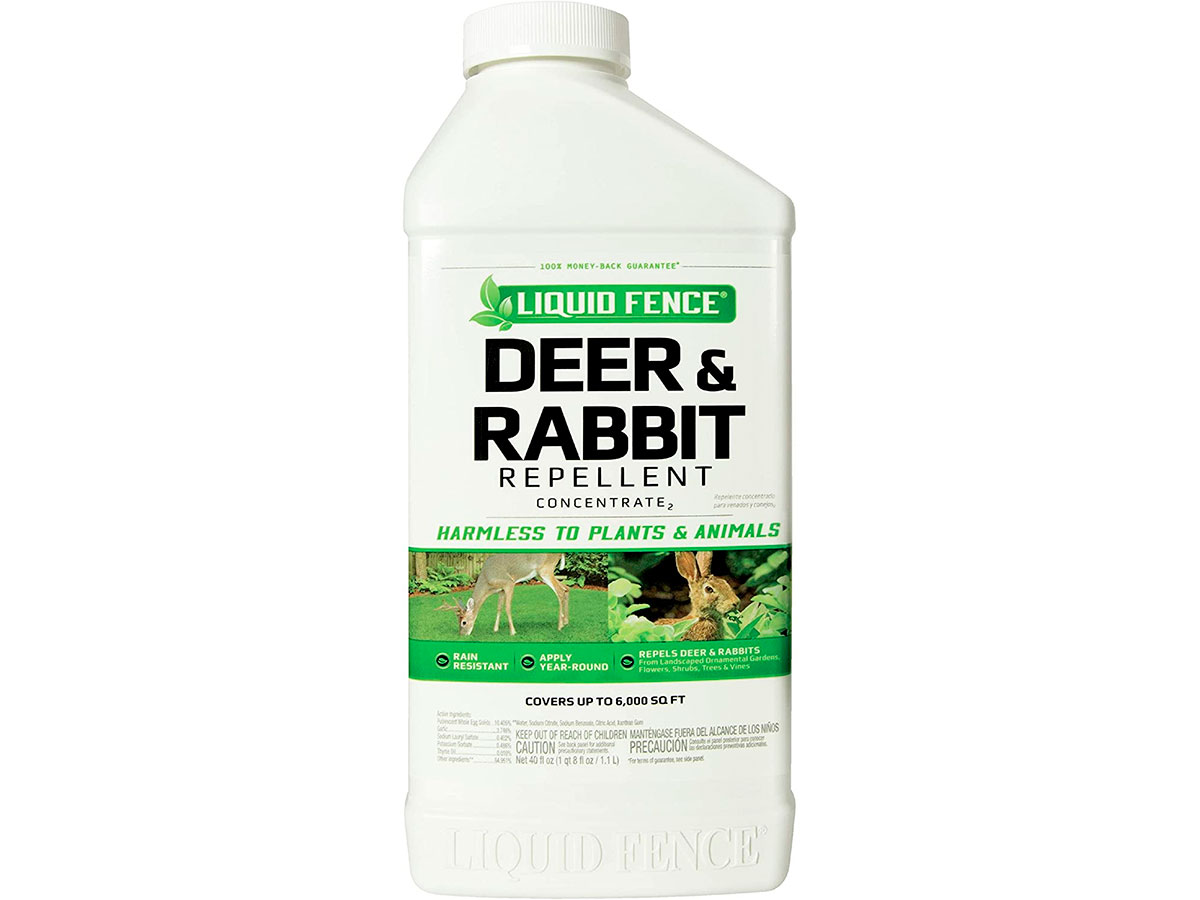
People’s Choice

Best Budget
- Understanding Rabbit Behavior: The First Step in Effective Control
- Top Commercial Rabbit Repellents of 2025
- Motion-Activated Deterrent Technology
- DIY Homemade Rabbit Repellents That Actually Work
- Habitat Modification: Making Your Yard Less Rabbit-Friendly
- Rabbit-Resistant Plants for a Protected Landscape
- Creating an Integrated Rabbit Control Strategy
- Seasonal Considerations for Effective Rabbit Control
- Conclusion: Finding Your Perfect Rabbit Control Solution
- Frequently Asked Questions
- Additional Resources
Understanding Rabbit Behavior: The First Step in Effective Control

Before exploring repellent options, it’s essential to understand rabbit behavior to implement the most effective control strategy. Rabbits are crepuscular animals, meaning they’re most active at dawn and dusk, often causing damage while you sleep or are away from home.
Feeding Habits
Rabbits prefer tender, new growth and have a particular fondness for vegetable gardens, flower beds, and the bark of young trees and shrubs.
Habitat Preferences
Rabbits need shelter near food sources. They prefer areas with dense shrubs, brush piles, or tall grass where they can hide from predators.
Sensitive Senses
Rabbits have highly developed senses of smell and taste, which makes scent and taste-based repellents particularly effective.
Breeding Speed
A single pair of rabbits can produce up to 18 kits in one year, turning a small problem into a major infestation quickly.
Top Commercial Rabbit Repellents of 2025
Today’s market offers numerous rabbit repellent solutions, from granular options to liquid sprays. The most effective products typically work by creating unpleasant scents, tastes, or fear responses that deter rabbits without harming them or your plants.
Safer Critter Ridder Animal Repellent
Editor's ChoiceHow Does It Work
How to Use
- Sprinkle granules around the perimeter of gardens, flower beds, and landscaped areas
- Create a 6-8 inch wide barrier around areas needing protection
- Apply more heavily in areas showing signs of rabbit activity
- Reapply every 30 days or after heavy rain
- For best results, apply in the evening when rabbits begin their feeding activities
- All-natural formula safe for people, pets, and plants
- Easy application with convenient shaker container
- Covers approximately 300 square feet per container
- Works in all weather conditions
- Minimal odor for humans but highly effective against rabbits
- Requires regular reapplication, especially after heavy rain
- More expensive than some homemade alternatives
- May not be effective against extremely hungry rabbits during food scarcity
Liquid Fence Repellent Concentrate
People's ChoiceHow Does It Work
How to Use
- Mix 8 oz of concentrate with 1 gallon of water in a garden sprayer
- Thoroughly spray plants and surrounding soil until wet but not dripping
- Allow to dry completely before watering plants or expected rainfall
- Apply every 30 days during growing season or more frequently during periods of rapid growth
- For best results, apply in evening hours when temperatures are cooler
- Highly concentrated formula provides excellent value (covers up to 6,000 sq ft)
- Rain-resistant formula works for up to 60 days per application
- Biodegradable ingredients break down naturally in the environment
- Can be used around edible plants (but not directly on parts to be consumed)
- Versatile formula also works against deer and other garden pests
- Initial application has a strong unpleasant odor (dissipates within 24 hours)
- Requires mixing and a separate sprayer for application
- May stain certain surfaces if not careful during application
Shake-Away Fox Urine Granules
Best BudgetHow Does It Work
How to Use
- Sprinkle granules around the perimeter of areas needing protection
- Create a protective barrier approximately 3-4 inches wide
- Pay special attention to garden entrances and known rabbit pathways
- Reapply every 30-60 days depending on weather conditions
- For persistent problems, refresh more frequently until rabbit activity subsides
- Extremely cost-effective solution (covers up to 10,000 sq ft)
- All-natural and biodegradable ingredients
- No harsh chemicals or poisons
- Minimal odor detectable to humans
- Works against multiple garden pests including squirrels and groundhogs
- Less effective during very wet weather periods
- May require more frequent reapplication than some competitors
- Not suitable for use directly on edible plants
Other Effective Commercial Repellents Worth Considering
| Product | Type | Active Ingredients | Coverage | Longevity |
|---|---|---|---|---|
| Liquid Fence Rabbit Repellent Spray | Ready-to-Use Spray | 1.04% Putrescent Egg | 2,000 sq ft | Up to 60 days |
| Safer Critter Ridder Deer & Rabbit Repellent | Ready-to-Use Spray | 4.63% Putrescent Egg, 0.001% Capsaicin, 0.001% Garlic | 500 sq ft | Up to 90 days |
| Ortho Deer B Gon Repellent | Ready-to-Use Hose-End-Sprayer | 0.76% Putrescent Egg, 0.22% Cinnamon Oil, 0.14% Clove Oil | 10,000 sq ft | Up to 30 days |
| I Must Garden Rabbit Repellent | Ready-to-Use Spray | Botanical Oils (Mint, Clove, Rosemary, Thyme) | 500 sq ft | Up to 30 days |
| Plantskydd Animal Repellent | Granular Shaker | 100% Dried Blood (Porcine and/or Bovine) | 1,750 sq ft | Up to 8 weeks |
Motion-Activated Deterrent Technology
For tech-savvy gardeners, motion-activated deterrents offer a modern alternative to traditional repellents. These devices detect rabbit movement and trigger responses that startle and discourage them from entering protected areas.
Orbit Yard Enforcer Motion-Activated Sprinkler
Best Electronic SolutionHow Does It Work
How to Use
- Connect to a standard garden hose and insert the included stake into the ground
- Position strategically to protect garden entrances or vulnerable plant areas
- Adjust sensitivity and spray distance settings as needed
- Set to day, night, or 24-hour operation mode depending on rabbit activity patterns
- Replace batteries as needed (typically every 3-4 months with regular use)
- Covers up to 1,600 square feet of protection
- Completely humane deterrent method
- Conserves water with targeted, brief sprays
- Solar-powered day/night detection modes
- Also effective against deer, squirrels and other garden pests
- Requires access to water hookup and adequate water pressure
- Less effective in freezing temperatures (must be winterized)
- Initial setup requires some experimentation for optimal positioning
Ultrasonic Deterrents: Do They Really Work?
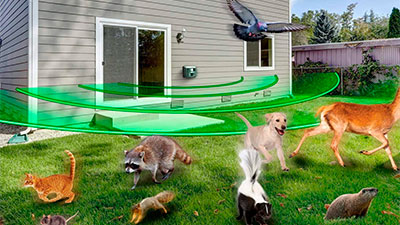
Ultrasonic rabbit repellers have gained popularity as a “set and forget” solution, but their effectiveness is subject to debate among experts and gardeners alike.
While some gardeners report success with ultrasonic devices, particularly the higher-end models with multiple frequency settings and motion activation, many experts recommend using them only as part of a broader rabbit control strategy rather than relying on them exclusively.
| Pros of Ultrasonic Devices | Cons of Ultrasonic Devices |
|---|---|
| Completely non-toxic and environmentally friendly | Effectiveness decreases over time as rabbits may become habituated |
| No regular reapplication needed | Physical barriers like buildings and dense vegetation block sound waves |
| Can cover large areas (some models claim up to 5,000+ sq ft) | Coverage claims are often based on ideal conditions rarely found in real gardens |
| Solar-powered models require minimal maintenance | May affect domestic pets (cats, dogs, pet rabbits) and beneficial wildlife |
If you choose to try an ultrasonic deterrent, look for models with adjustable frequency settings, motion activation capabilities, and solar power options for greatest effectiveness and convenience.
DIY Homemade Rabbit Repellents That Actually Work
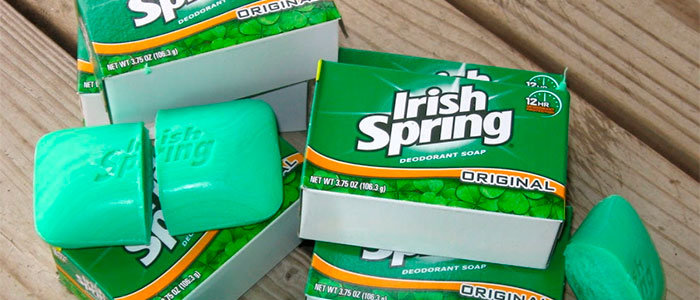
For gardeners on a budget or those preferring natural solutions, homemade rabbit repellents can be remarkably effective. These DIY recipes use common household ingredients to create taste and scent barriers that rabbits strongly dislike.
The Red Hot Rabbit Restraint Recipe
- 1 gallon water
- 5 crushed garlic cloves
- 1 teaspoon crushed red pepper flakes
- 1 tablespoon dish soap (as sticking agent)
Mix ingredients in a container and let steep in the sun for 1-2 days. Strain through a coffee filter, then transfer to a spray bottle. Apply to plants and reapply weekly or after rain.
Egg-Based Rabbit Repellent
- 1 whole egg
- 1 cup water
- 1 tablespoon dish soap
Beat egg, mix with water and soap, then spray on plants. The smell of egg as it breaks down is highly offensive to rabbits. Reapply every 2 weeks or after rain.
Simple Irish Spring Soap Deterrent
- Several bars of Irish Spring soap
- Cheesecloth or small mesh bags
- Wooden garden stakes
Cut soap into 1/2-inch cubes. Place 2-3 pieces in each cloth bag, tie closed, and attach to stakes placed throughout the garden. Replace every 2-3 months or when scent diminishes.
Application Tips for Homemade Repellents
- Apply repellents in the evening when temperatures are cooler and rabbits begin feeding
- Focus on the perimeter of gardens and areas with visible rabbit damage
- Reapply consistently after rain or irrigation that might wash away the repellent
- Spray new growth promptly as tender shoots are particularly attractive to rabbits
- Wear gloves when applying cayenne or hot pepper-based repellents to avoid skin irritation
Habitat Modification: Making Your Yard Less Rabbit-Friendly
One of the most effective long-term rabbit control strategies is making your property less attractive to rabbits in the first place. By eliminating shelter and modifying the landscape, you can significantly reduce rabbit populations without relying solely on repellents.
Remove Dense Cover
Eliminate brush piles, tall grass, and dense shrubs near gardens. Rabbits avoid open spaces where they feel exposed to predators.
Regular Maintenance
Keep your yard tidy with regular mowing, pruning of low-hanging branches, and removal of debris where rabbits might nest.
Secure Structures
Block access to spaces under decks, porches, and sheds where rabbits often create dens, using hardware cloth or fencing.
Strategic Planting
Create a buffer zone of rabbit-resistant plants around vulnerable gardens to naturally deter rabbits from entering.
Rabbit-Resistant Plants for a Protected Landscape

Incorporating plants that rabbits naturally avoid can create an effective first line of defense for your garden. While no plant is completely “rabbit-proof,” these options are generally less appealing to rabbits due to their texture, taste, or scent.
| Plant Type | Rabbit-Resistant Options | Why Rabbits Avoid |
|---|---|---|
| Herbs | Rosemary, Sage, Thyme, Mint, Lavender, Oregano | Strong aromatic oils and pungent scents |
| Perennials | Yarrow, Bee Balm, Russian Sage, Foxglove, Salvia, Daffodils | Bitter taste, toxicity, or strong scent |
| Annuals | Marigolds, Snapdragons, Lantana, Zinnias, Geraniums | Strong scents or unpalatable foliage |
| Shrubs | Boxwood, Juniper, Holly, Lilac, Butterfly Bush | Woody texture, thorns, or bitter compounds |
| Ornamental Grasses | Fountain Grass, Feather Reed Grass, Blue Fescue | Tough, fibrous texture and limited nutritional value |
Strategically planting these rabbit-resistant species around the perimeter of vulnerable gardens can create a natural barrier that deters rabbits from exploring further into your landscape.
Creating an Integrated Rabbit Control Strategy
The most successful approach to rabbit control combines multiple methods to create a comprehensive defense system. This multi-layered strategy addresses different aspects of rabbit behavior and creates redundancy in your protection.
Consider implementing the following three-tiered approach:
Tier 1: Physical Barriers
Install fencing or individual plant protectors for immediate and reliable protection of valuable plants and garden areas.
Tier 2: Repellents
Apply commercial or homemade repellents to reinforce protected areas and treat areas where physical barriers aren’t practical.
Tier 3: Habitat Modification
Make your property less welcoming to rabbits by removing shelter, planting rabbit-resistant species, and maintaining open spaces.
This layered approach ensures that if one method fails or becomes less effective, other barriers remain in place to maintain protection of your garden investment.
Seasonal Considerations for Effective Rabbit Control
Rabbit behavior and feeding patterns change throughout the year, requiring adjustments to your control strategy for maximum effectiveness.
| Season | Rabbit Behavior | Recommended Control Focus |
|---|---|---|
| Spring | Active breeding, feeding on new growth and tender shoots | Apply repellents early to emerging plants; install fencing around vegetable gardens |
| Summer | Continued breeding, abundant food sources | Maintain regular repellent application; focus on habitat modification |
| Fall | Building fat reserves for winter, exploring new food sources | Apply repellents to woody plants; protect tree trunks before first frost |
| Winter | Desperate for food, often gnawing bark of woody plants | Maintain tree guards above snow level; continue limited repellent use during thaws |
Conclusion: Finding Your Perfect Rabbit Control Solution
Effectively managing rabbits in your yard and garden doesn’t have to be a constant battle. By understanding rabbit behavior and implementing a strategic combination of repellents, barriers, and habitat modifications, you can protect your landscape investment while coexisting with these persistent creatures.
Remember these key takeaways as you develop your rabbit control plan:
- No single solution works in all situations; a multi-layered approach provides the best protection
- Consistency is crucial—regular application of repellents and maintenance of barriers ensures continued protection
- Adapt your strategy seasonally as rabbit behavior and food preferences change
- Both commercial and homemade repellents can be effective when used properly
- Prevention through habitat modification offers the most sustainable long-term solution
With the right combination of products and techniques from this guide, you can enjoy a beautiful, rabbit-resistant landscape that thrives season after season.
Frequently Asked Questions
How long do rabbit repellents typically last?
Most commercial rabbit repellents remain effective for 30-90 days depending on formulation and weather conditions. Rain, irrigation, and UV exposure from sunlight can degrade repellents faster, requiring more frequent reapplication. Granular products typically last longer than liquid sprays, while homemade solutions usually need to be reapplied weekly or after any rainfall.
For maximum protection, check product labels for specific reapplication schedules and consider using weather-resistant formulations during particularly wet seasons.
Are rabbit repellents safe to use around vegetable gardens?
Many commercial repellents are safe for use around vegetable gardens, but should not be applied directly to the edible portions of plants. Always check product labels for specific guidance on food crops. Products containing dried blood, predator urine, or botanical oils are generally safer around edibles than chemical-based options.
For vegetable gardens, consider applying repellents to the perimeter rather than directly on plants, or use physical barriers like fencing as your primary protection method.
Do ultrasonic repellers really work against rabbits?
Scientific evidence on ultrasonic repellers is mixed at best. While rabbits do have sensitive hearing that can detect ultrasonic frequencies, studies conducted by universities have found limited effectiveness in real-world settings. Factors like physical barriers (walls, dense vegetation), battery performance, and rabbit habituation can significantly reduce their effectiveness.
If you choose to try ultrasonic devices, use them as part of a broader rabbit control strategy rather than relying on them exclusively, and select models with adjustable frequencies and motion activation for best results.
What’s the most effective homemade rabbit repellent?
The most consistently effective homemade repellent combines hot pepper compounds with garlic and a sticking agent like dish soap. These ingredients create both taste and smell barriers that rabbits strongly dislike. The “Red Hot Rabbit Restraint” recipe in this article has received particularly positive feedback from gardeners.
For maximum effectiveness, allow homemade mixtures to steep in the sun for 1-2 days before application, strain thoroughly to prevent clogging spray nozzles, and reapply weekly or after rain.
Will coffee grounds repel rabbits from my garden?
Coffee grounds can help deter rabbits due to their strong smell and slightly acidic nature. While not as effective as dedicated repellents, used coffee grounds scattered around garden borders provide a modest deterrent effect, especially when combined with other repellent methods.
For best results, use fresh, unused grounds which have stronger odors, reapply frequently as the scent dissipates quickly, and consider mixing with other deterrents like crushed garlic or pepper flakes for enhanced effectiveness.
How can I protect young trees from rabbit damage in winter?
Young trees are particularly vulnerable to rabbit damage in winter when food sources are scarce. The most effective protection is installing tree guards made from 1/4-inch hardware cloth that extends at least 24 inches above the expected snow line. Leave 1-2 inches of space between the guard and trunk to allow for growth.
For additional protection, apply repellent sprays to the trunk before the first frost and reapply during winter thaws. Commercial tree wrap products can also provide protection but may need to be combined with repellents for complete effectiveness.
Can I use Irish Spring soap to repel rabbits?
Yes, Irish Spring soap has proven effective as a rabbit deterrent for many gardeners. The strong scent contains deodorant compounds that rabbits find offensive. For best results, cut bars into 1/2-inch cubes, place in mesh bags or cheesecloth, and hang from stakes throughout your garden.
Replace soap pieces every 2-3 months or when the scent weakens, and position multiple soap stations approximately 5-6 feet apart around garden perimeters. This method works best in combination with other deterrent strategies.
Are there any plants that completely repel rabbits?
No plant is completely rabbit-proof, especially during food scarcity. However, strongly aromatic herbs like rosemary, sage, and lavender are consistently avoided by rabbits, as are toxic plants like foxglove and daffodils. Plants with prickly or fuzzy textures are also less appealing to rabbits.
For best results, create a border of rabbit-resistant plants around more vulnerable species, and remember that even resistant plants may need additional protection during drought or early spring when food options are limited for hungry rabbits.
Additional Resources
For more information on effective rabbit control and garden protection, explore these trusted resources:
- Minnesota DNR: Living with Wildlife – Rabbits – Official guidelines for humane rabbit management
- House Rabbit Society – Humane Control Methods – Comprehensive guide to rabbit-friendly approaches to garden protection
- Montana State University Extension – Non-Chemical Rabbit Control – Research-backed organic control methods
- Wilson Bros Gardens – Homemade Deer & Rabbit Repellents – Additional DIY repellent recipes and application tips
- I Must Garden – Rabbit Repellent Guide – Natural commercial repellent options and usage guidelines
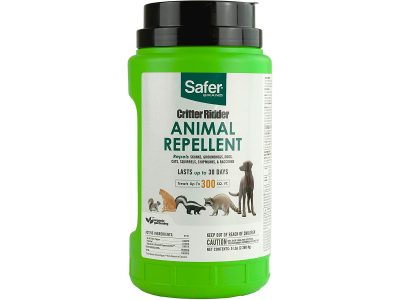
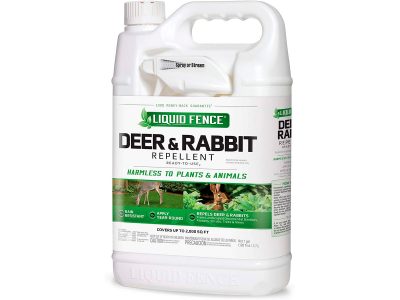
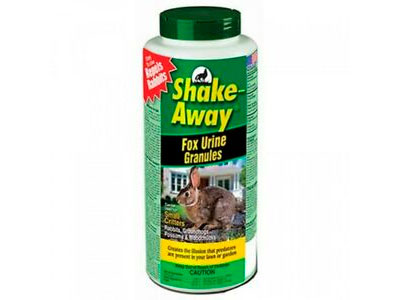

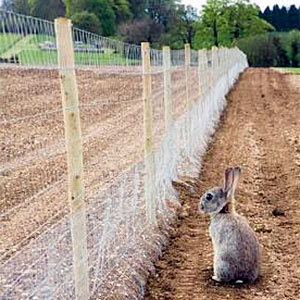
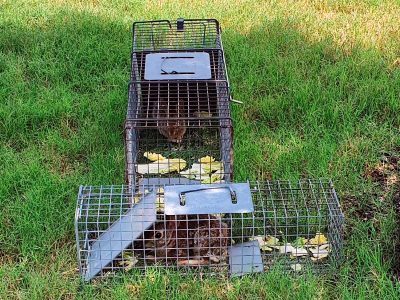

Love the picture with the rabbit looking through the fence at the concentration camp. Clearly the rabbit is in prison, since there is no food for her to be longing for on either side! I let the lush weeds grow up on the outside of my garden (forget that stupid good for nothing grass) and the rabbits are not interested in my garden. The beginning of this article encourages keepng the grass well manicured with huge spaces between the garden and everything else. My neighbors do that, and all they do is complain about the darn rabbits eating their veggies! How about changing our life approach and recognizing that we need to seek a balance in life. My yard is right next to the rabbit proof yards of the neighbors (according to this article), but my rabbit haven of a yard keeps them out of my garden area. Oh, and the 3 foot tall rabbit fencing does not keep the rabbits out. They simply jump through the higher section about 1 foot off the ground and go throug the wider holes. Or they dig under. Instead of trying any of the things mentioned in this article, try learning about permaculture and bring things back into balance so you won’t have to think about the rabbits as a problem any more.
What do you do to disarm the sprayer when it is a warm summer evening and you would like to sit in the garden with out being sprayed yourself? Is there a remote control to turn it off from a distance?
wear a raincoat with your rubbers
You’re kidding, right?? Turn off faucet that the hose is connected to. Then turn it back on when you go back in the house.